You may not find this terribly rewarding unless you're included here, so this is a good time for casual and random browsers to turn back before they get too caught up in the sweep and majesty of the proceedings and can't let go.
Marching round Sherando Lake and the Frontier Culture Museum
(with the Ottawa gang)

Marlowe, Dmitri, and young William are visiting for a few days here in the Shenandoah Valley, and we've already toured through Jefferson's Monticello, the Luray Caverns, and the Montgomery Hall jungle trail. Today's agenda include the 'cliff trail' at Sherando Lake, followed by an outdoor lunch at the Blue Mountain Brewery. 26 April 2023.

Sherando Lake opens on 1 April (we're usually here in the wildly off season, but today we'll have to pay the nominal entry fee -- $4 for the carfull, with our pass).

The area is nearly deserted, and William and Dmitri lead the way to the beach area, in the blissful peace and quiet of nature . . .

. . . except for the dueling boomboxes over in the picnicking area.

Never mind; we're too used to having the whole place to ourselves out of season, except for a handful of solitary fishermen on the dam or along the shore. Perhaps we can adapt.

We also very seldom get to see the Visitor Centre opened up for business, though . . .
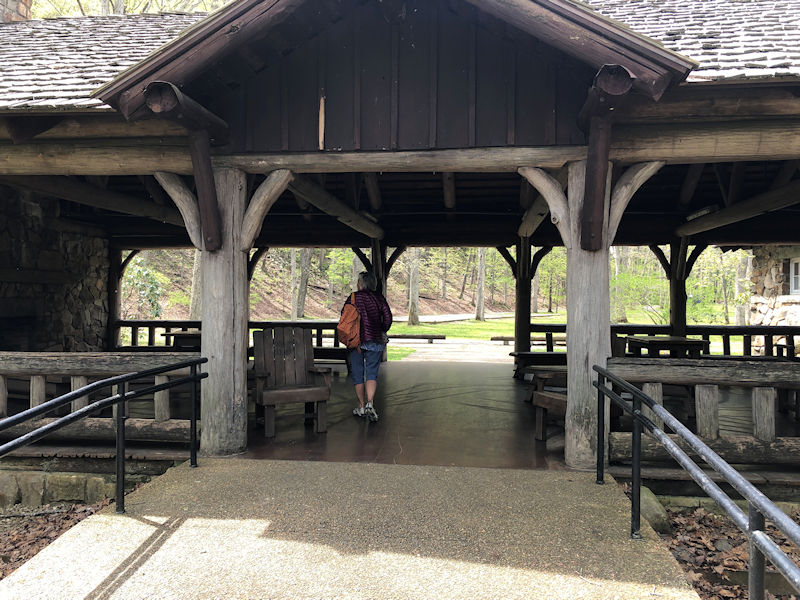
. . . there's not much business at the moment.

There is a modest gift shop, but the handwritten paper on the door says 'Closed for the season. See you next year. <smiley-face>'.

We've brought our books, and our favorite benches on the far side of the beach are vacant, but the boomboxes are unsubtly suggesting a change of plans.
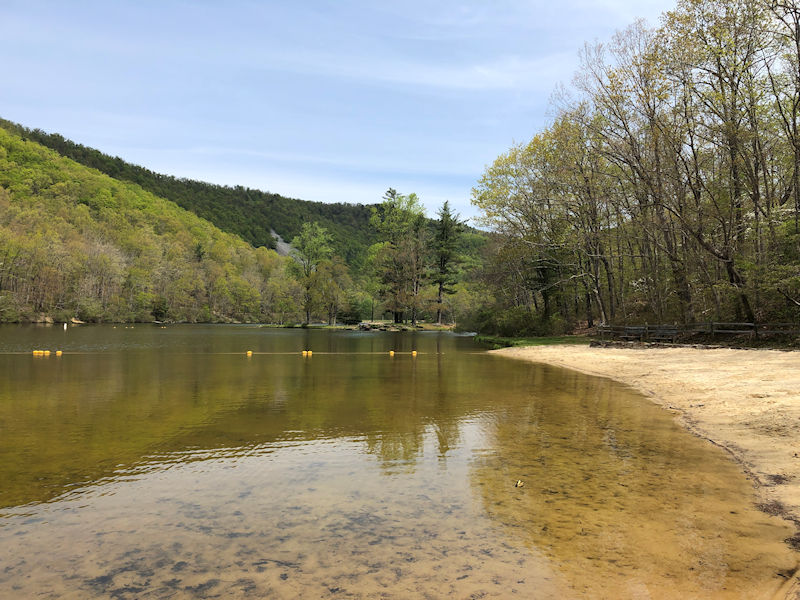
So, after few minutes admiring the tiny creatures darting about in the shallows, we'll head for the hills, or hill rather.

The so-called 'Cliff Trail' starts from over just beyond the Visitor Centre, and we're on our way.
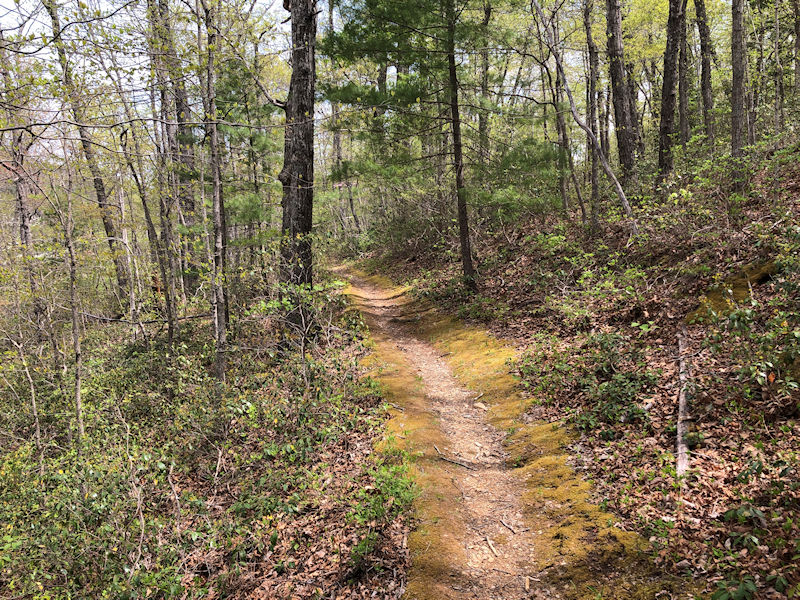
About 20 minutes of fairly gentle uphilling brings us to . . .
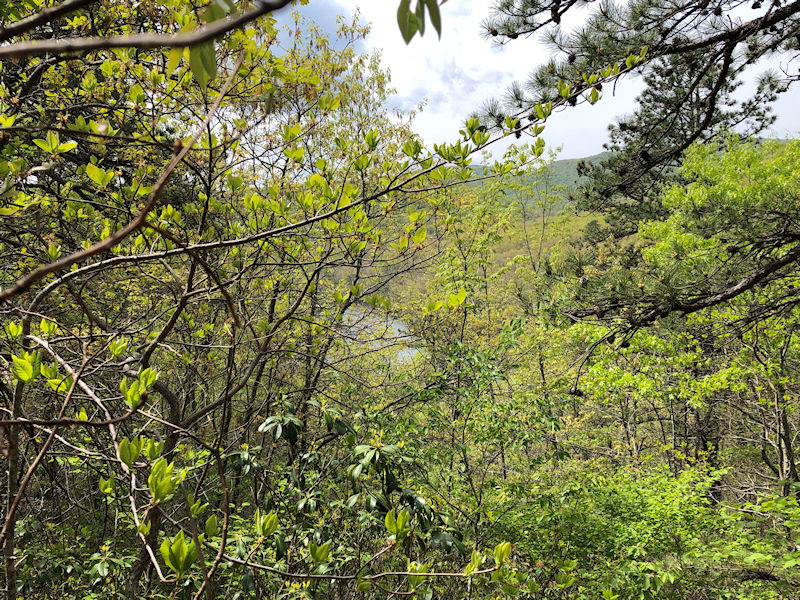
. . . the high point of the walk, and a fairly indistinct view of the lake. It's much more attractive in winter, without all of this pesky greenery getting in the way.
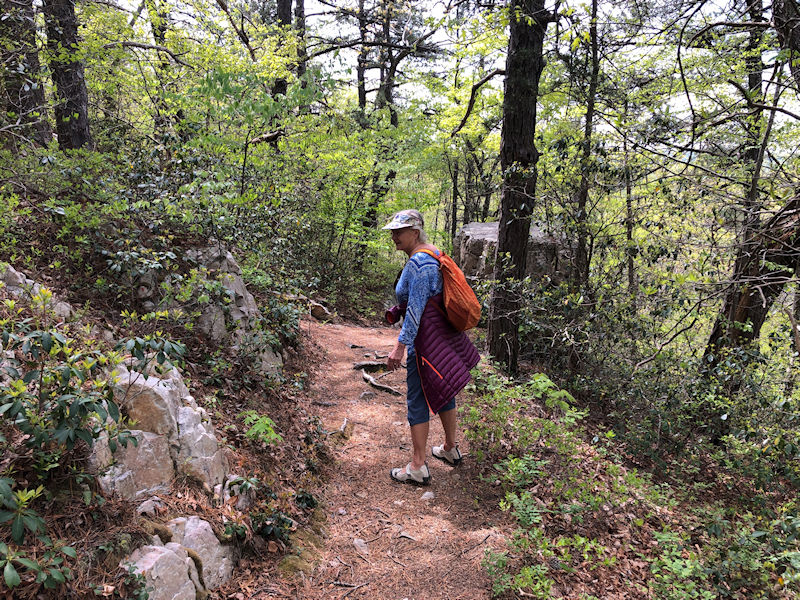
On the zigzag path leading down through the 'cliff' area
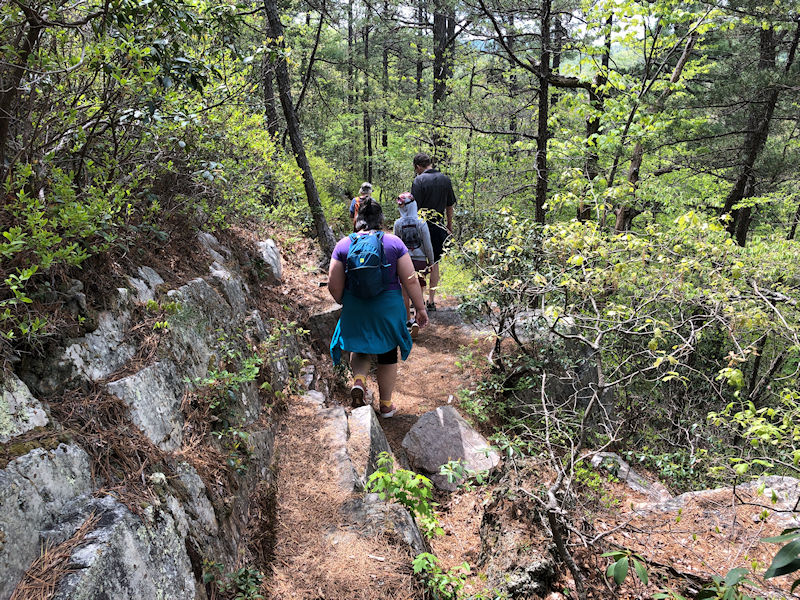
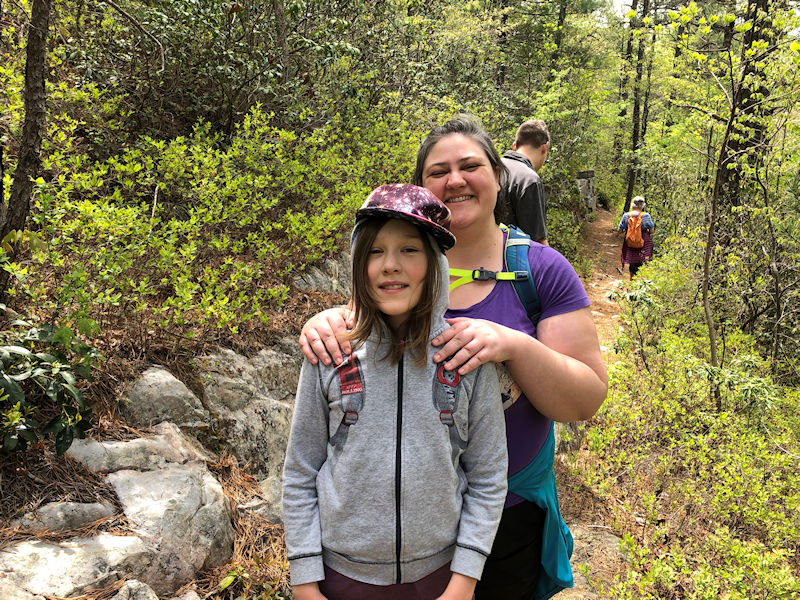
A photo op

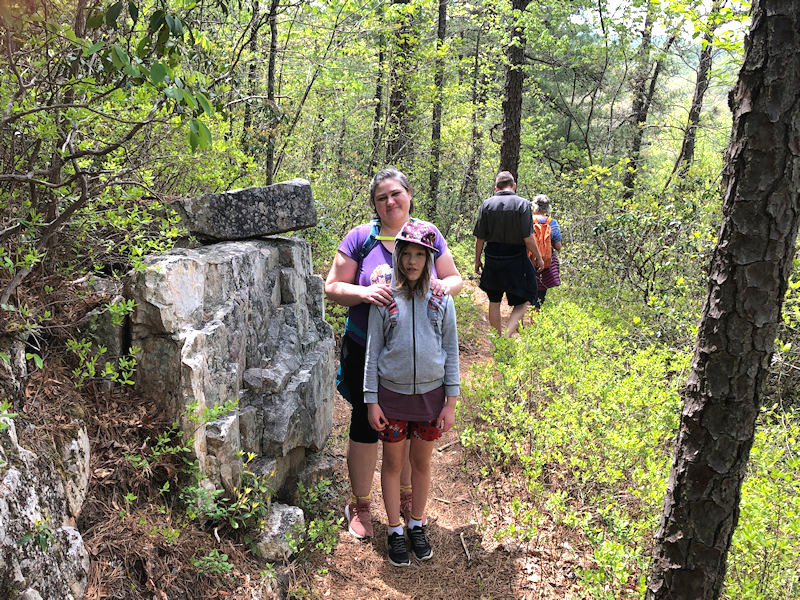
A photo op bis

One more zig, and then a final zag

That's the last zig . . .
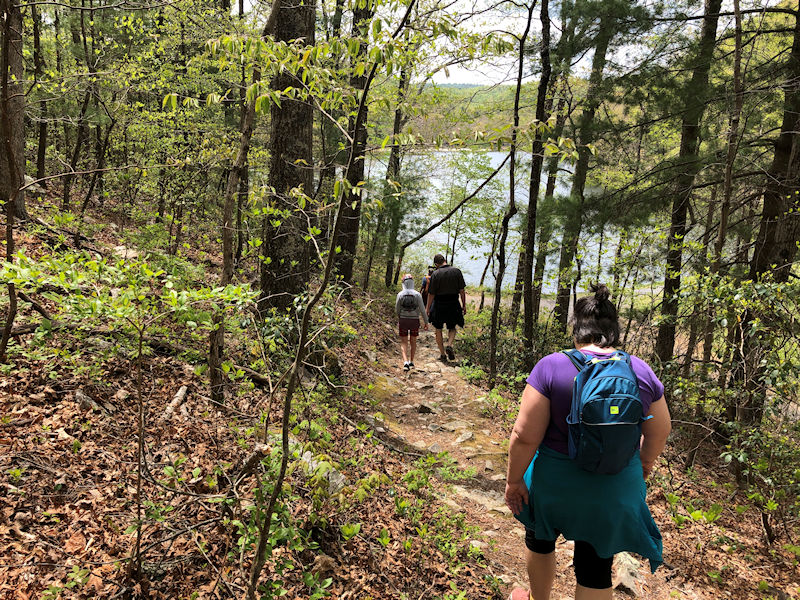
. . . followed by the last zag, and we're down to the dam.

Followed by an easy walk back along the eastern shoreline path, past . . .

. . . the charming little island, and . . .

. . . back to the car. After a bracing hour's walk, it's time for lunch at the . . .

. . . in Afton, just the other side of the Blue Ridge.
As You Like It
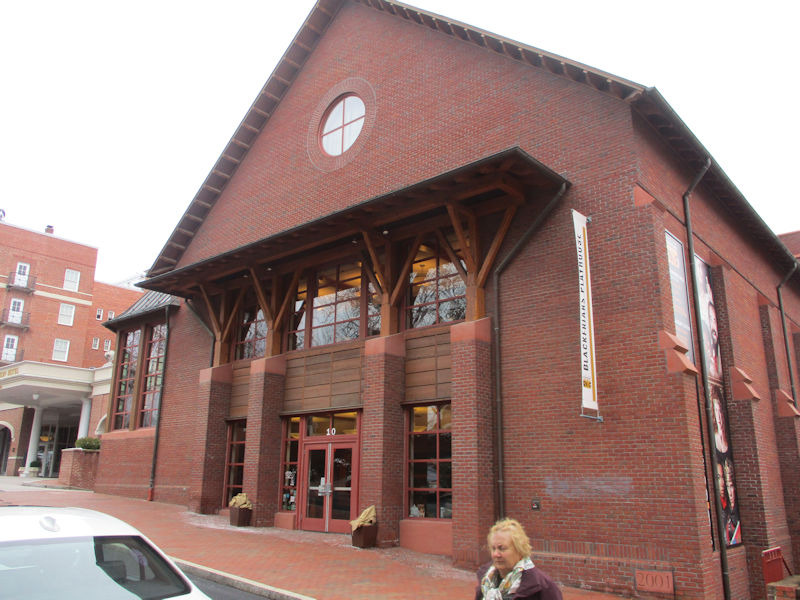
We're here for the early evening performance of As You Like It (1599) in the American Shakespeare Center's Blackfriars Playhouse (photo from an earlier visit).
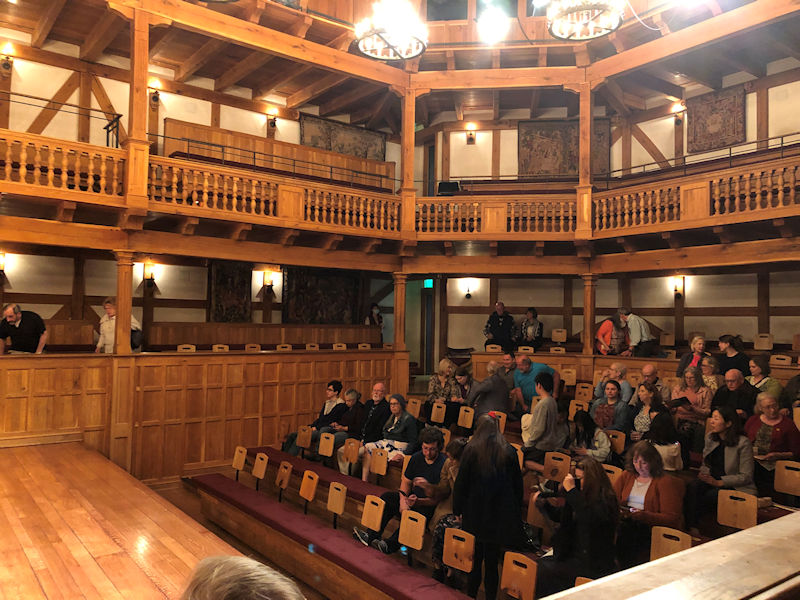
No photos during the play, but here's a quick look at the interior -- we spent a good deal of time (years ago) studying the scholarly debates about the outdoor and indoor theatres in Shakespeare's London, and this is probably a very reliable recreation of the original. That was a reconditioned 13th century Blackfriars Dominican priory that Shakespeare and his colleagues of the King's Men company leased for winter performances in 1608, in addition to their occupation of the unroofed Globe Theatre in summer.
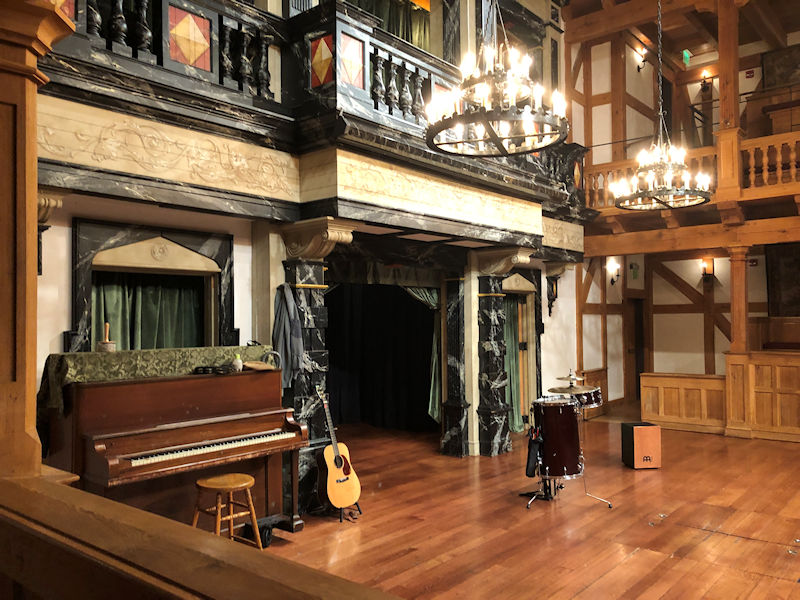
Shakespeare wrote and acted at the Blackfriars from 1608 until he retired in 1613 -- the theatre itself was closed with all the London theatres by the Puritan-led Parliament in 1642; it was torn down in 1655, and the site was burnt out in the Great Fire of 1666.

The American Shakespeare Center had a rough go of it during the Covid pandemic, but is clearly getting back on its feet again these days. In addition to the Shakespeare and other plays, it's engaged in scholarly conferences and educational programmes and workshops, including a 'Shakespeare and Performance' master's degree in cooperation with Mary Baldwin University, just up the street in Staunton.

Tonight's performance was enthusiastically well done, perhaps with a little less of the professional assurance that we've noticed in the past. The substitution of catchy modern music ('Don't worry, be happy') for the original five songs (including 'It was a Lover and his Lass') was (in my view) a big mistake.
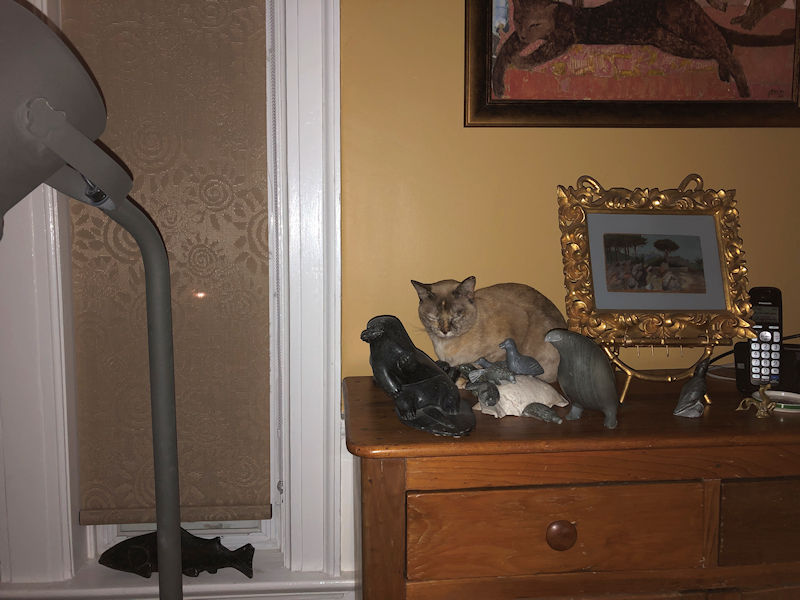
We're back home now, and Choupette doesn't want to be disturbed.
Staunton's Frontier Culture Museum

We've been in and out of this place many times in the past few years, and it's always fun, often educational, and good exercise in any case, unless you're taking advantage of one of the carts that volunteers patrol the grounds with (or even hiring your own).
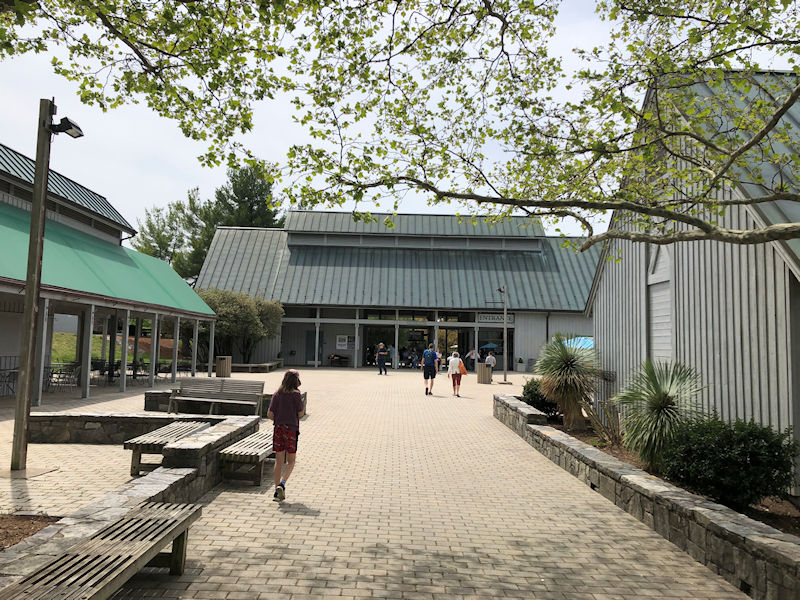
It's time to renew our annual family pass, after which it's free admission. Except for the pass.

An unsubtle wonder of nature
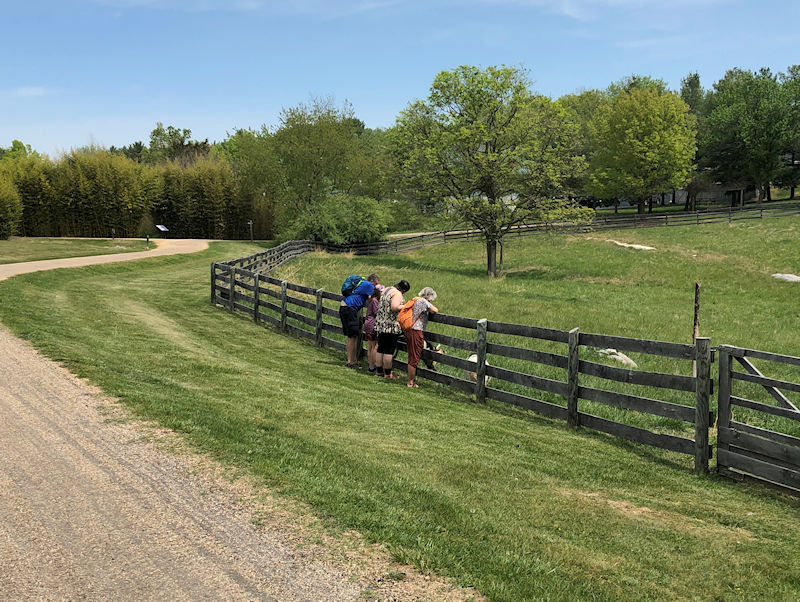
After various visits, we've taken on the onerous task of providing details here off the didactic posters and signs all the way along, and there's little sense in us in repeating all that now. There's a great deal of information about the exhibits on the Web, and in person of course, but interested parties could also consult an earlier webpage here, like this one or this one, or even this one.

That's a 17th century yeoman family house from the English midlands.
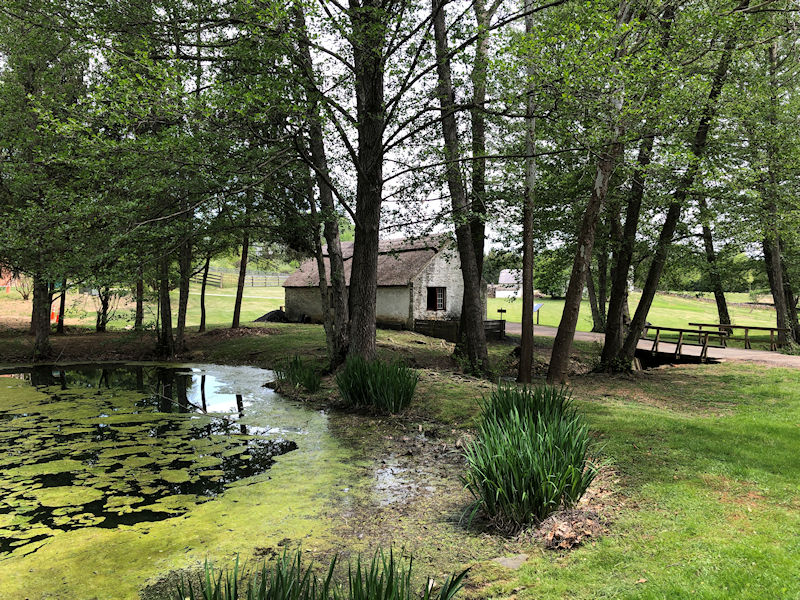
And a little farther along, that's the Irish forge.
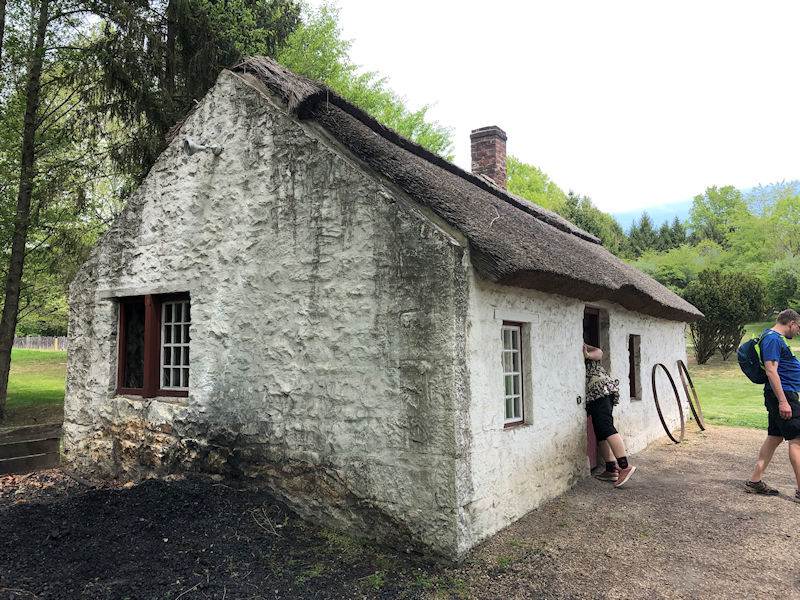
The Irish blacksmith's forge
(Many's the time we crowded into that space on a hot day to watch the blacksmith explaining how he makes nails) (some of which you can buy in the gift shop)
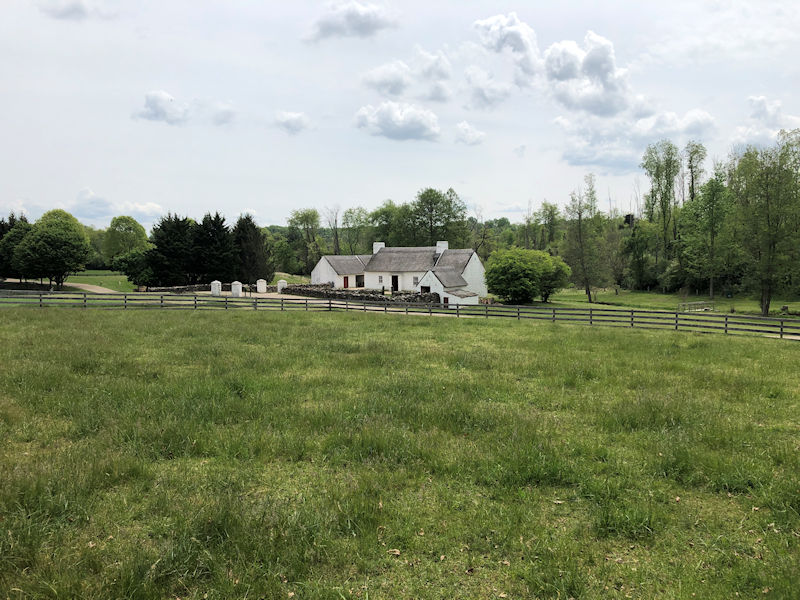
And a northern Irish farm (Protestants only here, please). All of these exhibits have been dismantled in situ and reassembled here.

A closer look at the Irish farm. The English, northern Irish, and German Protestant exhibits represent the three main cultural origins of the early European settlers in this region, as well as exhibits as well for the west African slave population, the Native American cultures that got largely overrun but left some important traces, and three 18th and 19th century farms from the Valley.

The Irish farm

One room for living in (so to speak) and a second for a big loom for supplementing the farm income, and . . .
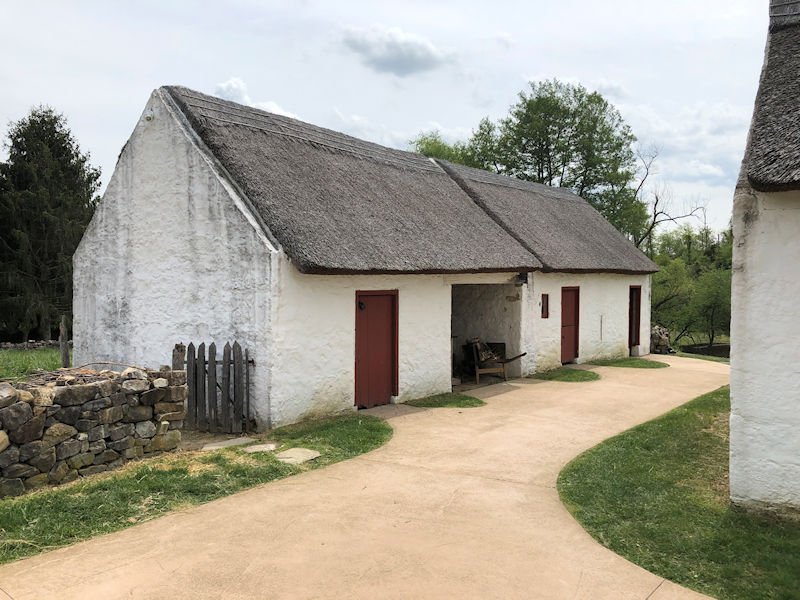
. . . a few small outbuildings for animals and equipment.

And they didn't even have wifi.

The German house, brought over from the traditionally Protestant Palatinate of the Rhine
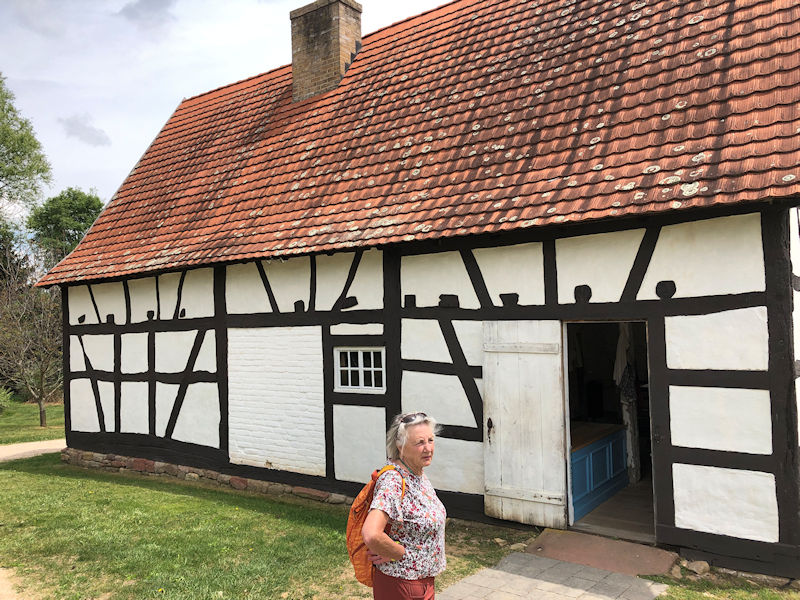

We've been told, on earlier visits, that this is a special kind of energy-saving stove.

The parlor, more or less. The only other ground floor room, besides the central kitchen, is a tailoring workshop. The current post-covid trend towards working from home had nothing on these piece-work people, with the whole family pitching in to make something for selling.

The German farm seen from the giant pig's corral
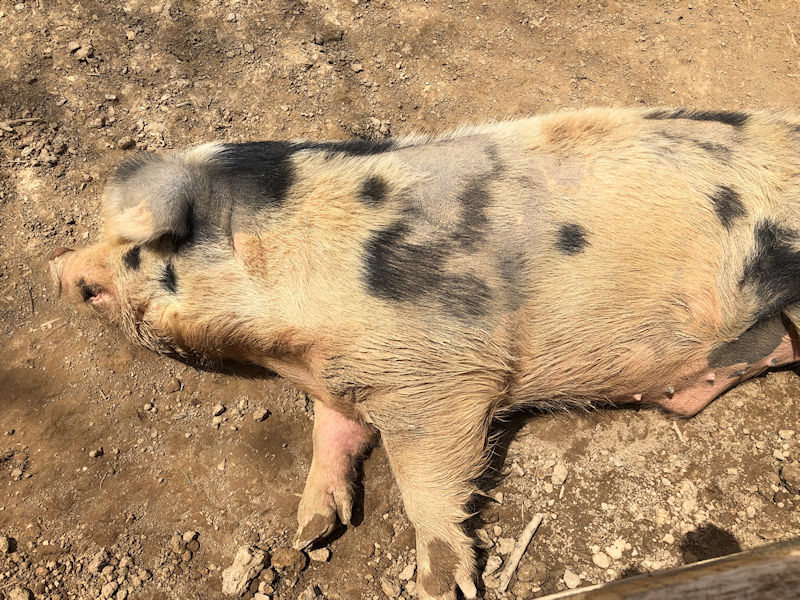
There are three humongous pigs on the property, to wit: Sunshine (here), Dalley, and Trouble (aka Trub).
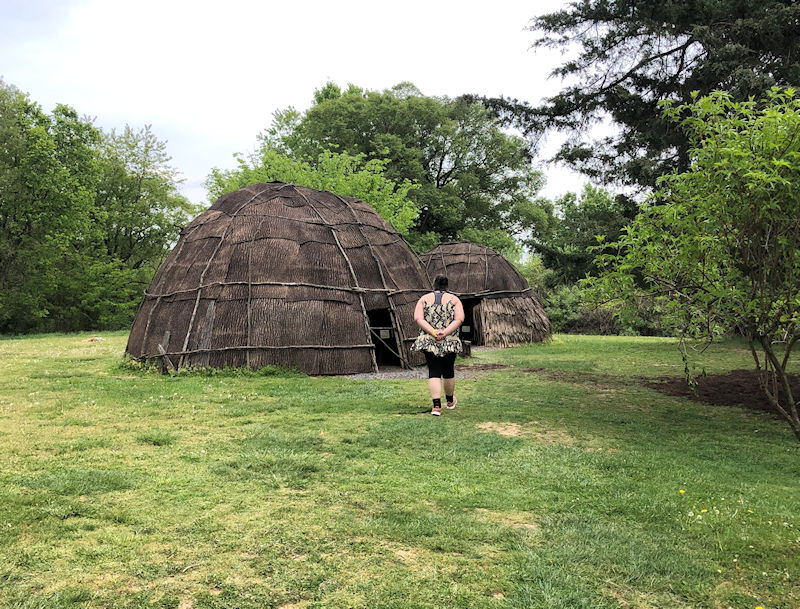
Marlowe with the recreation of a Native American village, or part of one
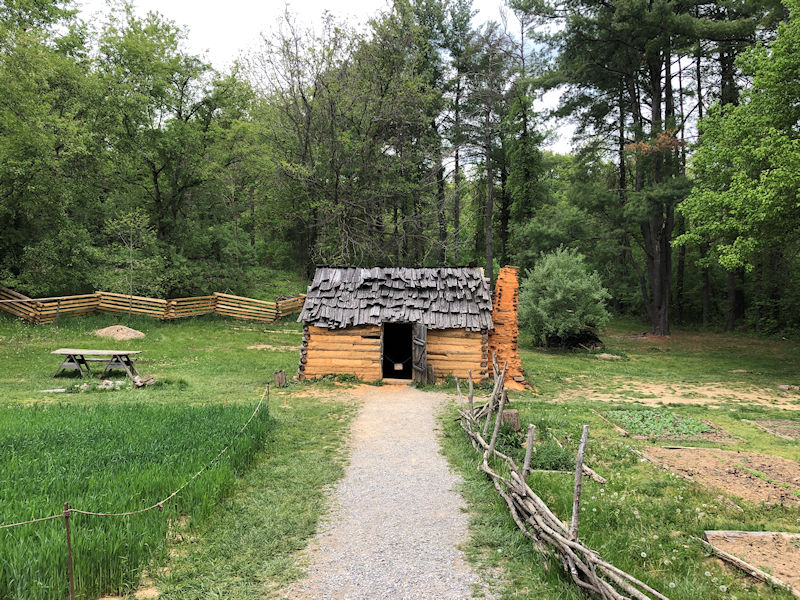
A 1740s 'starter home' in the Shenandoah Valley, a hovel basically -- it seems to have been thrown up quickly to get the farming underway, with the intention of improving the accommodations later.

The docent has been splitting logs for the house and fences in the time-honored old way, smacking on wedges. Dmitri is determined to have a go at it, and . . .
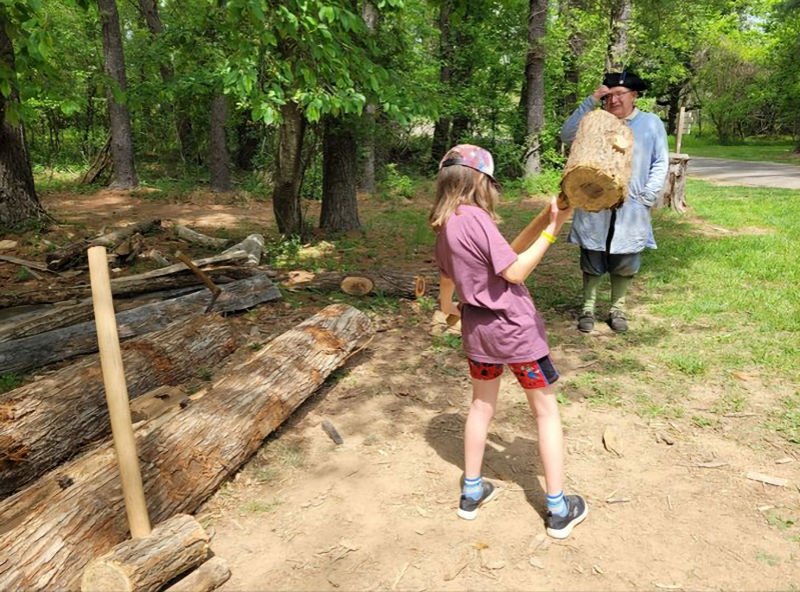
. . . so is William. The rest of our party looked on with interest and applauded at the best parts.
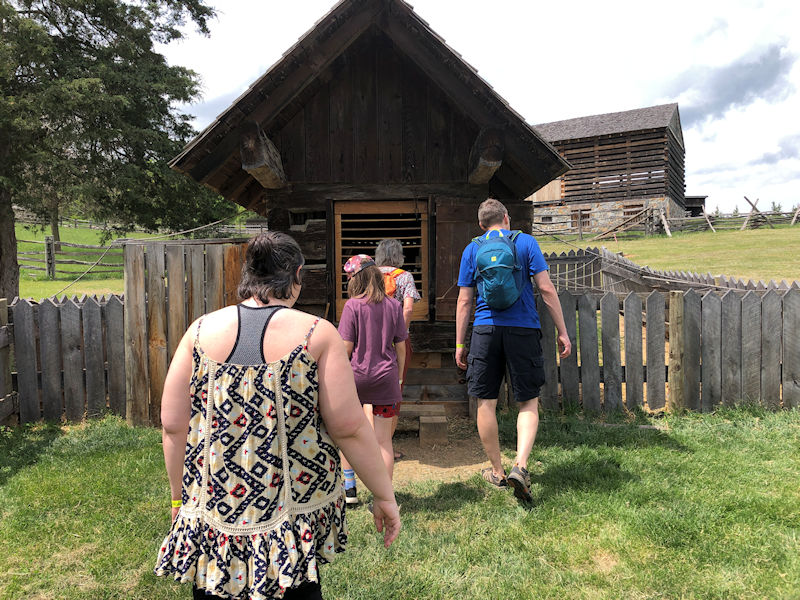
The queue for a peek into the chicken house
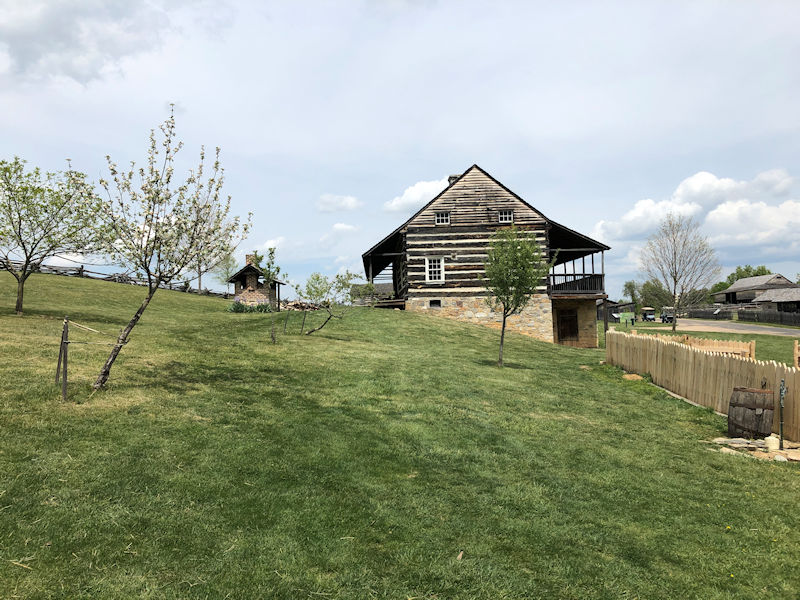
Next comes a more substantial farmhouse and outbuildings from the 1820s, when towns and more modern infrastructure, like roads, had had time to evolve in the Shenandoah region.
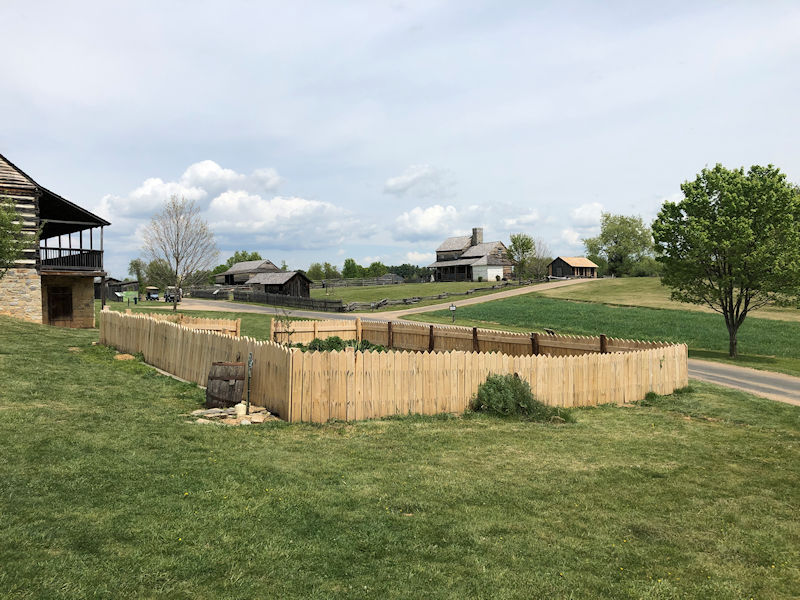
Across the lane, this is another American farm from a slightly later period: 'The 1850s American Farm represents life on the old frontier during a time of great economic, social, and political change in the United States'.
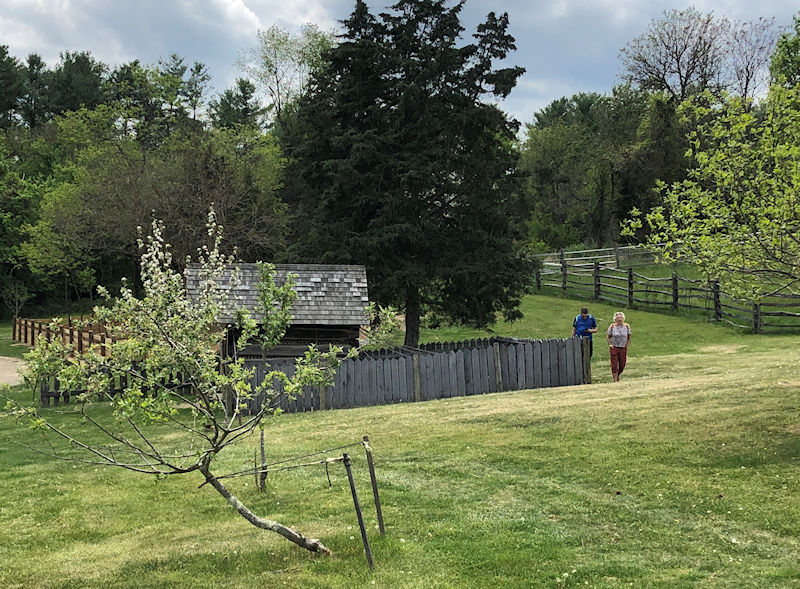
Reaching conclusions about the chicken house

The back porch of the 1820s American farmhouse

One of the reasons we've come out here today, with our visitors, is that the word had been passed round in town that the new lambs were being born now, but we haven't seen any yet. Kristin and Marlowe are going over to inquire of the sheep by the fence about what's on the programme.

These particular sheep seem oblivious, but by the nearby barn . . .

. . . some lambs only hours old, very shaky on the legs.

And so, having found our new lambs at last, we can retire with a sense of accomplishment. (Not allowed to pet them, though.)

Choupette taking up valuable dinner table space
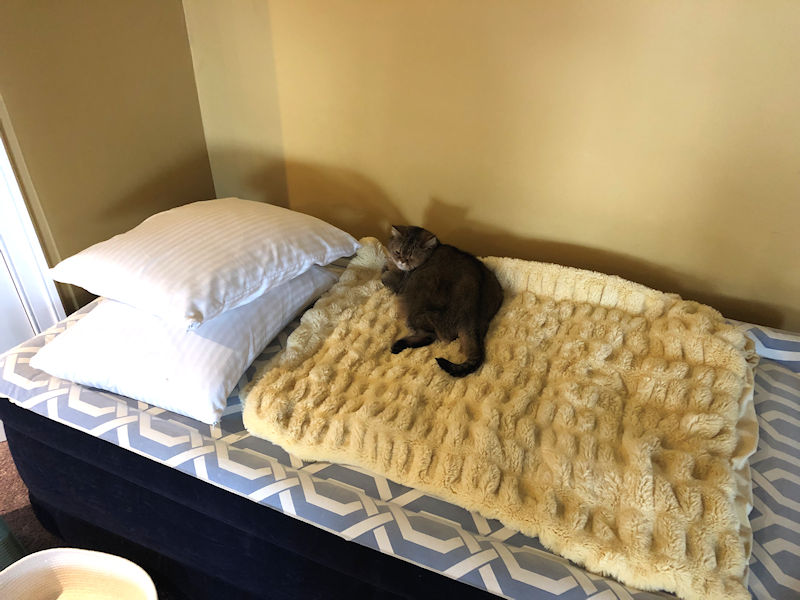
Melvin settling in on William's temporary bed on the mezzanine, and . . .
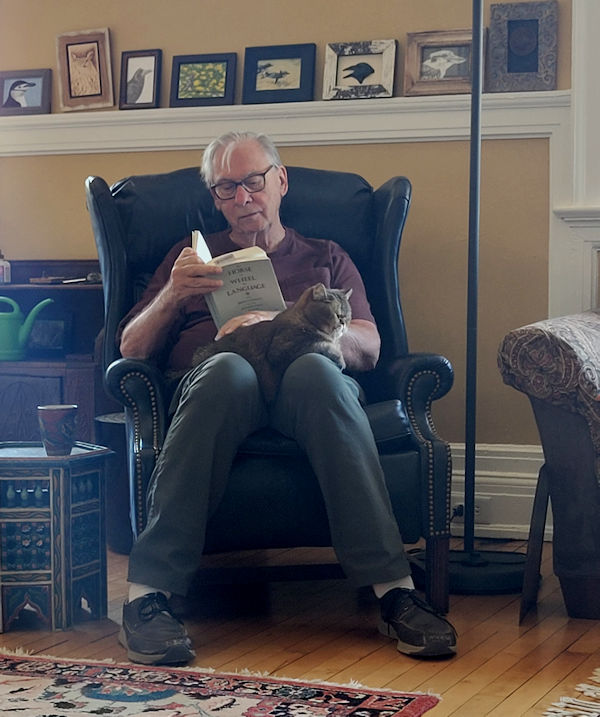
. . . the old dad catching up on the origins of the Proto-Indo-European Ur-language that spread evolutionarily from the Pontic-Caspian steppes to become the foundation of nearly half the world's languages. (It's hard going.)
Next up: Miscellaneous May Pix, plus Peonies

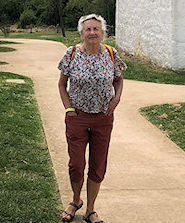 Dwight Peck's personal website
Dwight Peck's personal website
































































